Haojie Wang
TritonBench: Benchmarking Large Language Model Capabilities for Generating Triton Operators
Feb 20, 2025Abstract:Triton, a high-level Python-like language designed for building efficient GPU kernels, is widely adopted in deep learning frameworks due to its portability, flexibility, and accessibility. However, programming and parallel optimization still require considerable trial and error from Triton developers. Despite advances in large language models (LLMs) for conventional code generation, these models struggle to generate accurate, performance-optimized Triton code, as they lack awareness of its specifications and the complexities of GPU programming. More critically, there is an urgent need for systematic evaluations tailored to Triton. In this work, we introduce TritonBench, the first comprehensive benchmark for Triton operator generation. TritonBench features two evaluation channels: a curated set of 184 real-world operators from GitHub and a collection of operators aligned with PyTorch interfaces. Unlike conventional code benchmarks prioritizing functional correctness, TritonBench also profiles efficiency performance on widely deployed GPUs aligned with industry applications. Our study reveals that current state-of-the-art code LLMs struggle to generate efficient Triton operators, highlighting a significant gap in high-performance code generation. TritonBench will be available at https://github.com/thunlp/TritonBench.
COMET:Combined Matrix for Elucidating Targets
Dec 03, 2024



Abstract:Identifying the interaction targets of bioactive compounds is a foundational element for deciphering their pharmacological effects. Target prediction algorithms equip researchers with an effective tool to rapidly scope and explore potential targets. Here, we introduce the COMET, a multi-technological modular target prediction tool that provides comprehensive predictive insights, including similar active compounds, three-dimensional predicted binding modes, and probability scores, all within an average processing time of less than 10 minutes per task. With meticulously curated data, the COMET database encompasses 990,944 drug-target interaction pairs and 45,035 binding pockets, enabling predictions for 2,685 targets, which span confirmed and exploratory therapeutic targets for human diseases. In comparative testing using datasets from ChEMBL and BindingDB, COMET outperformed five other well-known algorithms, offering nearly an 80% probability of accurately identifying at least one true target within the top 15 predictions for a given compound. COMET also features a user-friendly web server, accessible freely at https://www.pdbbind-plus.org.cn/comet.
ARIC: An Activity Recognition Dataset in Classroom Surveillance Images
Oct 16, 2024



Abstract:The application of activity recognition in the ``AI + Education" field is gaining increasing attention. However, current work mainly focuses on the recognition of activities in manually captured videos and a limited number of activity types, with little attention given to recognizing activities in surveillance images from real classrooms. Activity recognition in classroom surveillance images faces multiple challenges, such as class imbalance and high activity similarity. To address this gap, we constructed a novel multimodal dataset focused on classroom surveillance image activity recognition called ARIC (Activity Recognition In Classroom). The ARIC dataset has advantages of multiple perspectives, 32 activity categories, three modalities, and real-world classroom scenarios. In addition to the general activity recognition tasks, we also provide settings for continual learning and few-shot continual learning. We hope that the ARIC dataset can act as a facilitator for future analysis and research for open teaching scenarios. You can download preliminary data from https://ivipclab.github.io/publication_ARIC/ARIC.
Optimal Kernel Orchestration for Tensor Programs with Korch
Jun 13, 2024


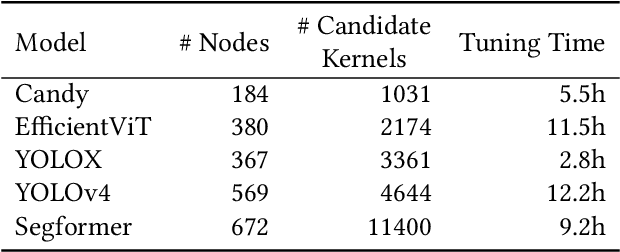
Abstract:Kernel orchestration is the task of mapping the computation defined in different operators of a deep neural network (DNN) to the execution of GPU kernels on modern hardware platforms. Prior approaches optimize kernel orchestration by greedily applying operator fusion, which fuses the computation of multiple operators into a single kernel, and miss a variety of optimization opportunities in kernel orchestration. This paper presents Korch, a tensor program optimizer that discovers optimal kernel orchestration strategies for tensor programs. Instead of directly fusing operators, Korch first applies operator fission to decompose tensor operators into a small set of basic tensor algebra primitives. This decomposition enables a diversity of fine-grained, inter-operator optimizations. Next, Korch optimizes kernel orchestration by formalizing it as a constrained optimization problem, leveraging an off-the-shelf binary linear programming solver to discover an optimal orchestration strategy, and generating an executable that can be directly deployed on modern GPU platforms. Evaluation on a variety of DNNs shows that Korch outperforms existing tensor program optimizers by up to 1.7x on V100 GPUs and up to 1.6x on A100 GPUs. Korch is publicly available at https://github.com/humuyan/Korch.
* Fix some typos in the ASPLOS version
PowerFusion: A Tensor Compiler with Explicit Data Movement Description and Instruction-level Graph IR
Jul 11, 2023Abstract:Deep neural networks (DNNs) are of critical use in different domains. To accelerate DNN computation, tensor compilers are proposed to generate efficient code on different domain-specific accelerators. Existing tensor compilers mainly focus on optimizing computation efficiency. However, memory access is becoming a key performance bottleneck because the computational performance of accelerators is increasing much faster than memory performance. The lack of direct description of memory access and data dependence in current tensor compilers' intermediate representation (IR) brings significant challenges to generate memory-efficient code. In this paper, we propose IntelliGen, a tensor compiler that can generate high-performance code for memory-intensive operators by considering both computation and data movement optimizations. IntelliGen represent a DNN program using GIR, which includes primitives indicating its computation, data movement, and parallel strategies. This information will be further composed as an instruction-level dataflow graph to perform holistic optimizations by searching different memory access patterns and computation operations, and generating memory-efficient code on different hardware. We evaluate IntelliGen on NVIDIA GPU, AMD GPU, and Cambricon MLU, showing speedup up to 1.97x, 2.93x, and 16.91x(1.28x, 1.23x, and 2.31x on average), respectively, compared to current most performant frameworks.
Why is the winner the best?
Mar 30, 2023



Abstract:International benchmarking competitions have become fundamental for the comparative performance assessment of image analysis methods. However, little attention has been given to investigating what can be learnt from these competitions. Do they really generate scientific progress? What are common and successful participation strategies? What makes a solution superior to a competing method? To address this gap in the literature, we performed a multi-center study with all 80 competitions that were conducted in the scope of IEEE ISBI 2021 and MICCAI 2021. Statistical analyses performed based on comprehensive descriptions of the submitted algorithms linked to their rank as well as the underlying participation strategies revealed common characteristics of winning solutions. These typically include the use of multi-task learning (63%) and/or multi-stage pipelines (61%), and a focus on augmentation (100%), image preprocessing (97%), data curation (79%), and postprocessing (66%). The "typical" lead of a winning team is a computer scientist with a doctoral degree, five years of experience in biomedical image analysis, and four years of experience in deep learning. Two core general development strategies stood out for highly-ranked teams: the reflection of the metrics in the method design and the focus on analyzing and handling failure cases. According to the organizers, 43% of the winning algorithms exceeded the state of the art but only 11% completely solved the respective domain problem. The insights of our study could help researchers (1) improve algorithm development strategies when approaching new problems, and (2) focus on open research questions revealed by this work.
OLLIE: Derivation-based Tensor Program Optimizer
Aug 02, 2022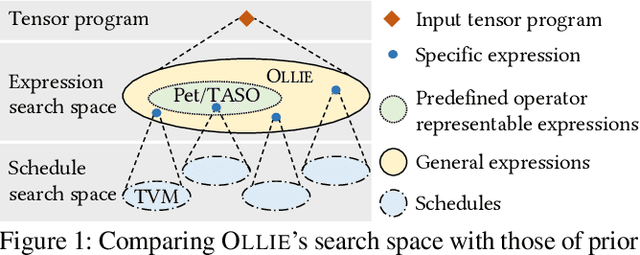
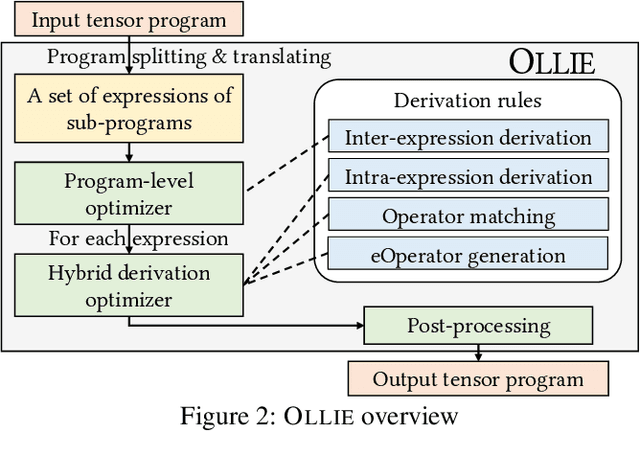
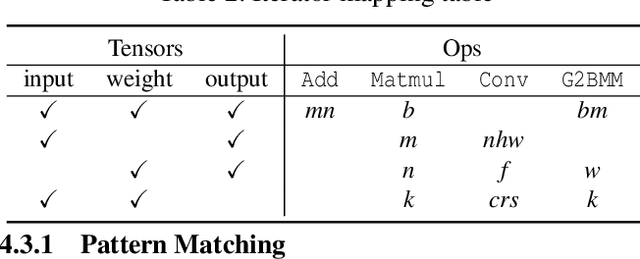
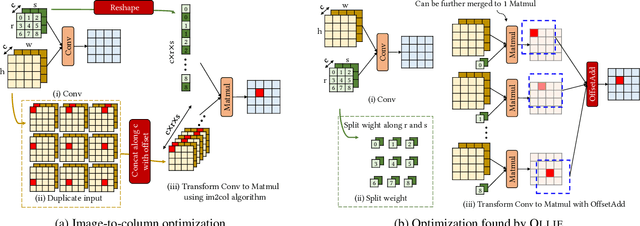
Abstract:Boosting the runtime performance of deep neural networks (DNNs) is critical due to their wide adoption in real-world tasks. Existing approaches to optimizing the tensor algebra expression of a DNN only consider expressions representable by a fixed set of predefined operators, missing possible optimization opportunities between general expressions. We propose OLLIE, the first derivation-based tensor program optimizer. OLLIE optimizes tensor programs by leveraging transformations between general tensor algebra expressions, enabling a significantly larger expression search space that includes those supported by prior work as special cases. OLLIE uses a hybrid derivation-based optimizer that effectively combines explorative and guided derivations to quickly discover highly optimized expressions. Evaluation on seven DNNs shows that OLLIE can outperform existing optimizers by up to 2.73$\times$ (1.46$\times$ on average) on an A100 GPU and up to 2.68$\times$ (1.51$\times$) on a V100 GPU, respectively.
2020 CATARACTS Semantic Segmentation Challenge
Oct 21, 2021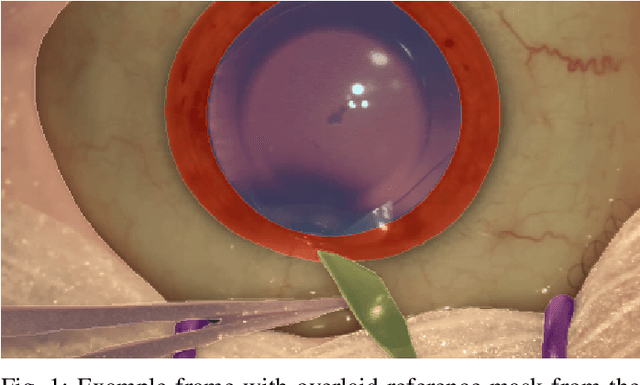
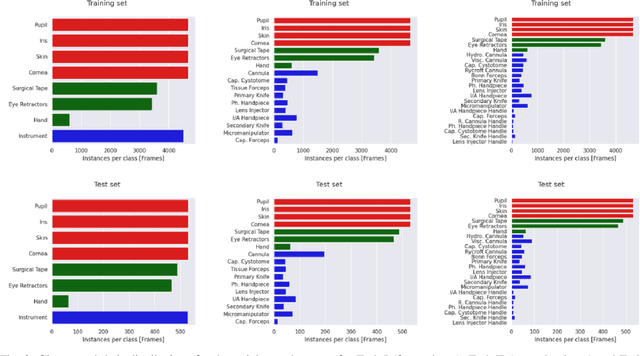
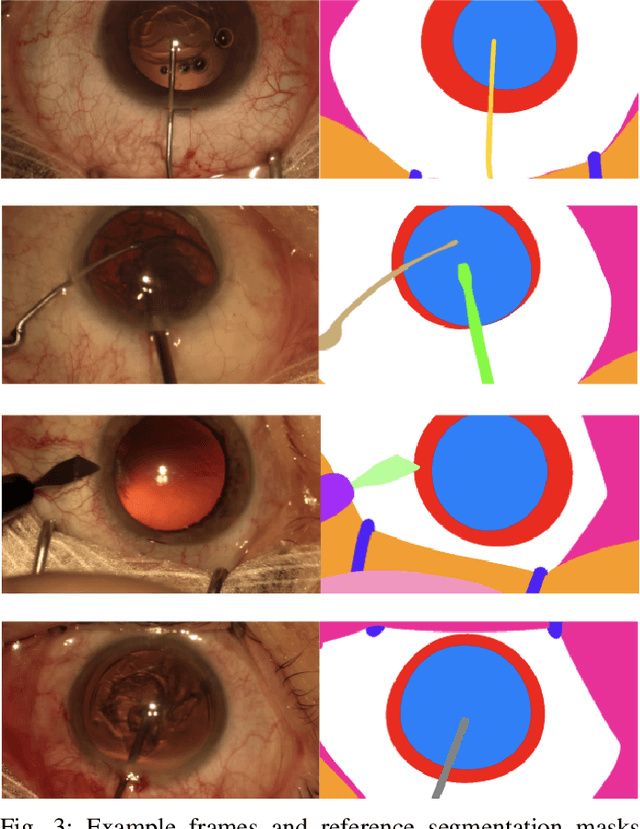
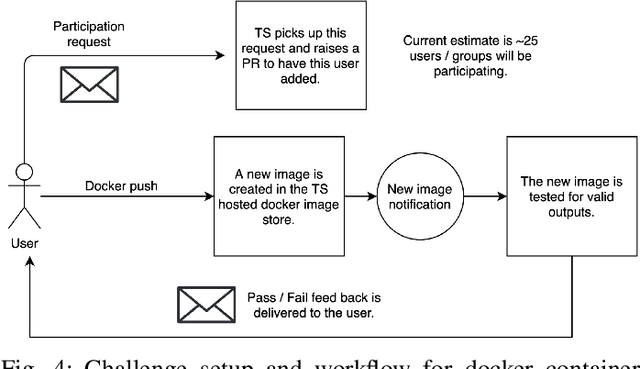
Abstract:Surgical scene segmentation is essential for anatomy and instrument localization which can be further used to assess tissue-instrument interactions during a surgical procedure. In 2017, the Challenge on Automatic Tool Annotation for cataRACT Surgery (CATARACTS) released 50 cataract surgery videos accompanied by instrument usage annotations. These annotations included frame-level instrument presence information. In 2020, we released pixel-wise semantic annotations for anatomy and instruments for 4670 images sampled from 25 videos of the CATARACTS training set. The 2020 CATARACTS Semantic Segmentation Challenge, which was a sub-challenge of the 2020 MICCAI Endoscopic Vision (EndoVis) Challenge, presented three sub-tasks to assess participating solutions on anatomical structure and instrument segmentation. Their performance was assessed on a hidden test set of 531 images from 10 videos of the CATARACTS test set.
 Add to Chrome
Add to Chrome Add to Firefox
Add to Firefox Add to Edge
Add to Edge